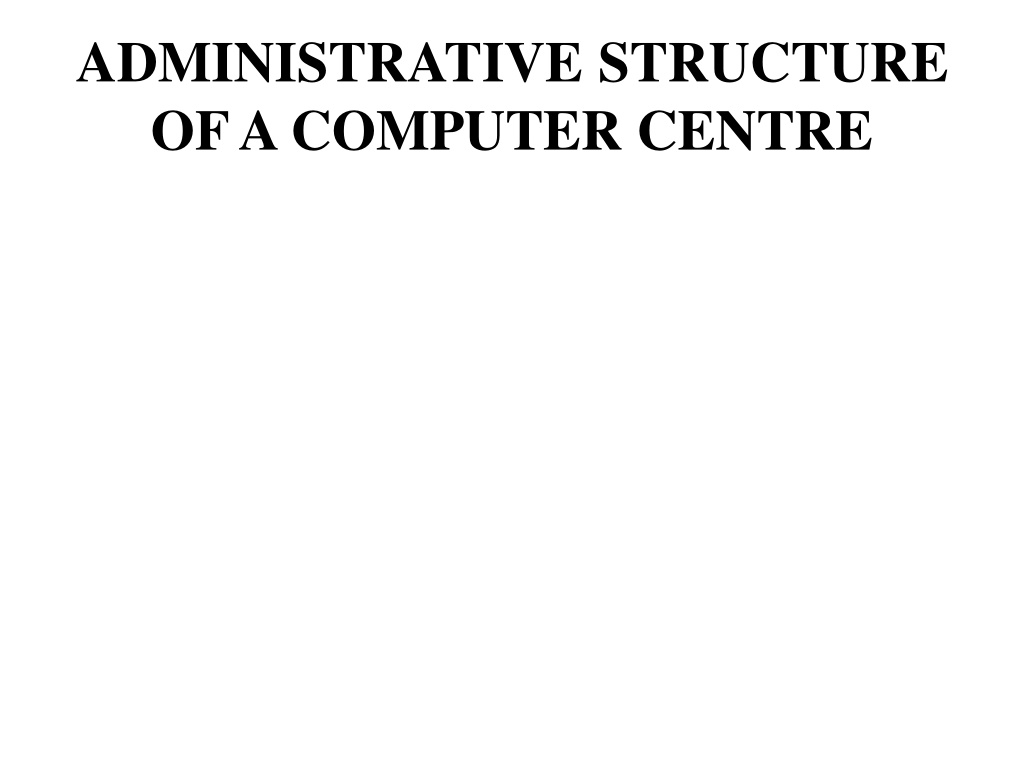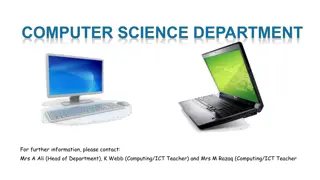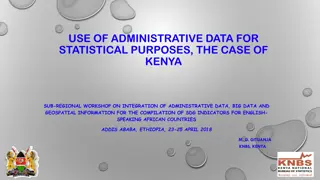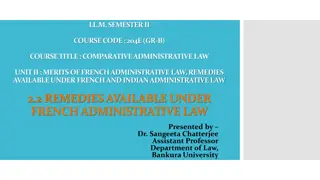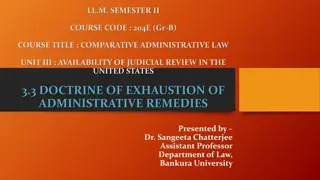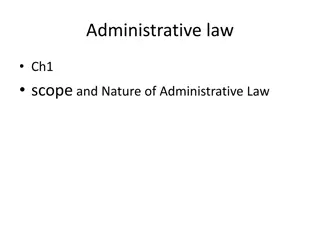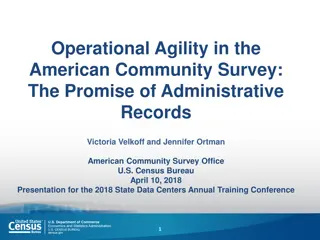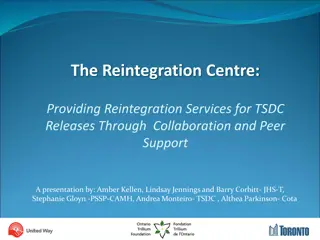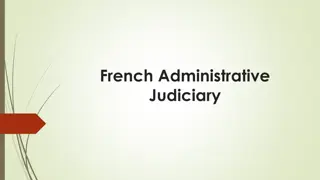ADMINISTRATIVE STRUCTURE OF A COMPUTER CENTRE
An overview of the administrative setup of a computer center including roles, responsibilities, and financial considerations involved in setting up and maintaining the operations. The structure shows how the administration oversees various aspects of the computer department to align with company objectives.
Download Presentation

Please find below an Image/Link to download the presentation.
The content on the website is provided AS IS for your information and personal use only. It may not be sold, licensed, or shared on other websites without obtaining consent from the author.If you encounter any issues during the download, it is possible that the publisher has removed the file from their server.
You are allowed to download the files provided on this website for personal or commercial use, subject to the condition that they are used lawfully. All files are the property of their respective owners.
The content on the website is provided AS IS for your information and personal use only. It may not be sold, licensed, or shared on other websites without obtaining consent from the author.
E N D
Presentation Transcript
ADMINISTRATIVE STRUCTURE OF A COMPUTER CENTRE
to oversee the administration of the computer centre who in turn reports to the executives or the directors board on the necessary protocols needed in putting the computer department in such a way that it would be in line with the company objective.
organization and the extent of computerization within it. Another factor that determined the size of an organization s data processing department is the financial considerations. That is the capital cost of the equipment. The major items to be considered here are:
(ii) Site preparation (building work, air conditioning).
(iii) Staff recruitment (agency fees, advertising).
(iv) File creation (data gathering and preparation cost).
(v) Change over cost (parallel running, overtime for staff).
(vi) training. Education and
Recruiting cost: - Staff salaries
under which you have the computer analyst, programmer, operation manager, etc. There is probably no standard structure for data processing department. Precise responsibilities and reporting procedures vary. Figure1.2 and 1.3 show some alternatives.
The DPM is responsible for both research and development and for production. He is also in change of the following responsibilities
co-ordination of the developmental objectives.
establishment of an effective communications within the department including documentation and other standards
provision, utilization and control of resources required within the department.
responsible foe the overall control and coordination of a particular project.
responsible for the allocation of functions within the project.
software and hardware to meet those needs and then implement the information system. He defines error messages to be incorporated and checks to be embedded into the system. He functions as project team leader and supervisor to the system analyst
(i) Collect, records and analysis details of existing procedure and systems
(ii) Develop ideals for computerized systems superior to the current and existing system.
(iii) Prepare computer operating instructions.
(iv) Define error messages to be incorporated.
(vi) Specified check and control to be embedded in the new system.
